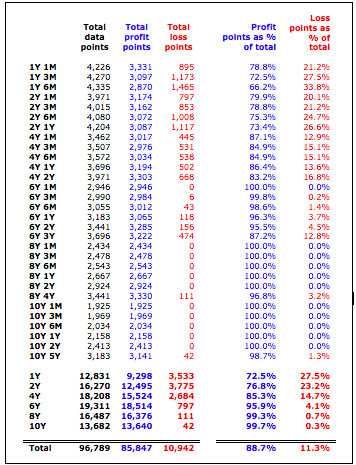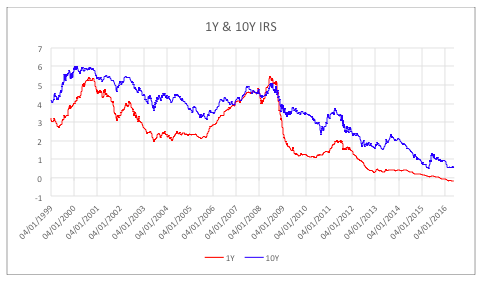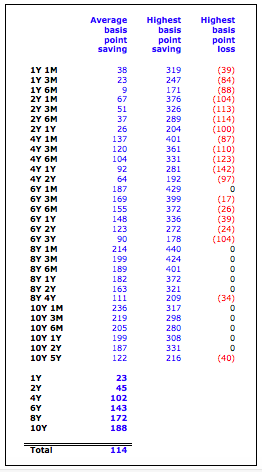4 financiële problemen die bedrijven in gevaar kunnen brengen – Deel II
| 21-12-2016 | Jan Meulendijks | Olivier Werlingshoff | FM.nl |

Maandag plaatsten wij het artikel ‘4 financiële problemen die bedrijven in gevaar kunnen brengen‘ waarin twee experts een reactie gaven op het artikel, dat op 12 december op FM.nl geplaatst is. Naar aanleiding van dit artikel hebben we nog meer reacties mogen ontvangen, die wij jullie niet willen onthouden.
De 4 problemen nogmaals op een rij:
1. Acuut probleem (illiquiditeit)
Bedrijven gaan vaak failliet, omdat ze geen cash meer hebben. Het gaat mis als er onvoldoende cash is om aan kortlopende financiële verplichtingen te kunnen voldoen.
2. Chronisch probleem(organisatie is onrendabel)
Een onderneming kan jarenlang verlies lijden, maar toch blijven voortbestaan zolang er maar geld is.
3. Structureel probleem (insolvabiliteit)
Van insolvabiliteit spreek je wanneer er iets mis is met de vermogensstructuur van een onderneming.
4. Strategisch probleem (toekomstplannen)
Een onderneming heeft een strategisch probleem wanneer het management niet goed in zicht heeft hoe de markt veranderd en hoe de onderneming haar toekomstplannen daarop moet aanpassen.
Onze experts reageren als volgt:
Jan Meulendijks:
Volgens mij leidt een strategisch probleem op kortere of langere termijn ook tot de andere 3 problemen, waarbij ik het “chronisch” probleem min of meer gelijk stel met het strategisch probleem.
Geen visie of een verkeerde visie zal een onderneming onherroepelijk ten onder doen gaan tenzij er bijsturing plaatsvindt. De auteur van het artikel legt sterk de nadruk op cash genereren, meer nog dan op winst genereren. Cash is inderdaad het belangrijkste om in leven te blijven, maar die cash moet dan wel voortkomen uit de bedrijfsactiviteiten en bijvoorbeeld niet uit verkoop van activa simpelweg omdat er geen andere cash genererende mogelijkheden meer zijn.
Investeerders/financiers kijken ook vooral naar het cash genererend vermogen van de investeringen die met hun geld worden gedaan. Gaan die zoveel cash genereren dat minimaal de aflossing en rente op de additionele investeringen gedaan kunnen worden? Liefst natuurlijk nog beter dan dat, zodat er ook nog een bijdrage aan de winst/vermogenspositie wordt gedaan.
Het voorbeeld van Blokker zal inderdaad een praktijktest zijn, zijn die 200 miljoen inderdaad cash genererend?
Een veel voorkomend praktijkvoorbeeld van een strategisch probleem is de aankoop van een bedrijfspand, zeker in tijden van hoge rente; hiervoor gaan ondernemingen vaak grote leningen/financieringen aan, terwijl er nauwelijks tot geen extra cash mee wordt gegenereerd t.o.v. een huurpand. Het pand is dan een blok aan het been.
De treasurer zal als eerste de acute problemen signaleren, en kan van daaruit naar control en commercie waarschuwen. Hopelijk is dat tijdig…

Jan Meulendijks
Cash management, transaction banking and trade professional
Olivier Werlingshoff:
Wat ik met name heb gemerkt tijdens opdrachten is dat bedrijven die momenteel (nog) geen liquiditeitsprobleem hebben dit onderdeel ook geen aandacht geven.Tenminste onvoldoende aandacht. Liquiditeiten zijn er genoeg en hierdoor bestaat er onvoldoende belangstelling voor cash bij zowel de directie en hierdoor ook bij de medewerkers in zijn geheel.
Liquiditeitsplanningen zijn een “verplicht nummer” die snel ergens binnen de organisatie, meestal door de Control afdeling wordt opgesteld op basis van de V&W rekening. Andere bedrijfsonderdelen worden daarbij niet of nauwelijks betrokken. Afwijkingen worden vaak niet gerapporteerd of kunnen niet worden verklaard.Je zou denken dat het dak gemaakt moet worden wanneer het niet regent!
Een directeur vroeg mij een keer, toen ik hem sprak over debiteuren die te laat betaalden, “hebben wij nu, op dit moment een probleem?” Liquiditeit technisch niet, dus wist ik gelijk waar ik op de prioriteitenlijst stond, onderaan dus! Ik werd vreemd aangekeken toen ik vroeg of hij problemen zou hebben als zijn salaris een keer drie maanden later betaald zou worden. Doel van mijn opmerking was om het geheel te vertalen naar de persoonlijke sfeer. Wat gebeurt er wanneer gelden niet of niet tijdig binnenkomen?
Kortom er wordt inderdaad vaak pas ingegrepen wanneer de liquiditeiten een probleem vormen en meestal is het dan te laat of net niet maar moeten er rigoureuze maatregelen getroffen worden.
‘Cash awareness’ promoten door verschillende afdelingen te betrekken bij het opstellen van een liquiditeitsplanning is naar mijn weten de eerste actie die kan worden opgezet om meer ‘feeling’ te krijgen bij wat er binnen een organisatie speelt. Het ‘under control’ krijgen van de organisatie.

Managing Consultant at Proferus

 As RBS in april 2016, ABN AMRO announced recently that they will lay off another 1500 employees worldwide and reduce services due to ongoing digitalisation. We came across
As RBS in april 2016, ABN AMRO announced recently that they will lay off another 1500 employees worldwide and reduce services due to ongoing digitalisation. We came across 
 A normal yield curve is usually upward sloping with diminishing increases in yield– the longer the tenor, the higher the interest rate. Generally it is assumed that longer maturities contain larger risks for lenders and they require adequate compensation with a risk premium in the form of a liquidity spread.
A normal yield curve is usually upward sloping with diminishing increases in yield– the longer the tenor, the higher the interest rate. Generally it is assumed that longer maturities contain larger risks for lenders and they require adequate compensation with a risk premium in the form of a liquidity spread.






